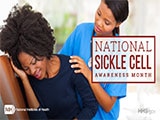Researchers Explore Health Effects of E-Cigarettes
It’s not uncommon these days to see people using electronic cigarettes (e-cigarettes) in restaurants, bars and parks, all while huge plumes of aerosol swirl around them. Also known as “vaping,” the use of these hand-held devices has become common, and some teenagers, according to the CDC and FDA, are their biggest fans: More than 2 million middle and high school students use the products, which come in assorted flavors and forms, from devices that resemble regular cigarettes to those that resemble pens or flash drives.
According to preliminary data from the National Youth Tobacco Survey, the number of high-school age children reporting use of e-cigarettes rose by more than 75 percent from 2017 to 2018; and use among middle-school children increased nearly 50 percent. In a recent Washington Post op-ed, HHS Secretary Alex Azar and FDA Commissioner Scott Gottlieb called this an epidemic.
E-cigarettes are the most commonly used tobacco product among youth in the United States. Given their popularity, health officials see the fast-growing use of e-cigarettes as cause for concern among youth. E-cigarettes come with a small battery that heats a liquid that may contain nicotine, transforming it into an inhalable aerosol. Most liquids also feature flavors, including some kid-friendly flavors like bubblegum, gummy bear, and cotton candy, which can broaden their appeal to youth.
Yet, while e-cigarettes are less harmful than regular combustible tobacco products—and a possible pathway to tobacco-smoking cessation for adults—the evidence on the effectiveness of these products for helping adult smokers quit completely is still uncertain. Additionally, questions remain about the long-term health impact of e-cigarettes, including respiratory outcomes. Smoking tobacco, for example, can cause chronic obstructive pulmonary disease, or COPD, the fourth leading cause of death in the United States. However, it’s uncertain what impact e-cigarette aerosol exposure may have on respiratory health.

The Surgeon General has reported that tobacco use among youth and young adults in any form, including e-cigarettes, is not safe. E-cigarette use among children and teenagers may lead to addiction and harm to the developing adolescent brain. Finally, there is a concern that e-cigarette use may lead to future uptake of regular cigarettes among young people.
A broad coalition of agencies and institutes across the Department of Health and Human Services, including the FDA, NIH and CDC, are now working together to explore, in-depth, the health effects of these products. For example, the National Heart, Lung, and Blood Institute (NHLBI) will examine the effects of e-cigarettes on the heart and lungs. The institute has recently awarded 20 research grants in this area in addition to its previously awarded e-cigarette studies; four of those grants were also supported by the FDA. Several other grants in this area have been funded by other NIH institutes such as the National Institute on Drug Abuse and the National Cancer Institute.
In addition to these activities, the Centers for Disease Control and Prevention is at the forefront of population-based surveillance and public messaging on the issue of e-cigarettes among young people, and led the 2016 U.S. Surgeon General’s Report on e-cigarettes, the first report issued by a federal agency that comprehensively reviewed the public health issue of e-cigarettes and their impact on our nation’s youth.
“This has been a fantastic collaboration across HHS,” said Lisa Postow, Ph.D., a project officer in the Airway Biology & Disease Branch in NHLBI’s Division of Lung Diseases. “We’re excited to play a key role in gathering evidence on the health effects of e-cigarettes that will hopefully inform practice and policy in the future.”
Each of the new NHLBI grants will seek to explore the potential health effects of e-cigarettes. Selected studies include the following:
Characterizing the chemical composition of e-cigarette aerosol: Researchers know that e-cigarette aerosol contains a complex mixture of chemicals that may include nicotine to flavoring additives, and some unknown components. In addition, the aerosol itself is made up of tiny particles that can be inhaled deep into the lung. Researchers at Battelle Pacific Northwest Laboratories are looking to define what about the aerosol is most harmful to the lungs and how the aerosol may affect lung tissue when inhaled.
Analyzing the impact of e-cigarettes on the lungs of young users: There is growing evidence that e-cigarette use can be harmful to the lungs, promoting conditions such as chronic bronchitis, and that teens might be particularly susceptible. Researchers at the University of Kansas Medical Center are studying the effects of the aerosol exposure on airway inflammation and lung dysfunction in young e-cigarette users for a period of at least six months.
Studying the effect of e-cigarettes on the heart: Scientists at Huntington Medical Research Institutes are using rodent models to determine the short- and long-term effects of e-cigarette use on the structure and function of the heart and cardiovascular system. They will compare its effects on young versus old hearts as well as hearts with underlying disease. The researchers hope to determine the comparative safety of e-cigarettes to regular combustible cigarettes.
Measuring blood biomarkers in e-cigarette users to assess heart, lung impacts: Researchers at the University of Wisconsin-Madison are measuring blood biomarkers for cardiovascular and lung diseases in four different user-groups: those who use only e-cigarettes, exclusive combustible cigarette smokers, people who use both cigarettes and e-cigs, and those who don’t smoke or use e-cigarettes. They plan to use these biomarkers to determine the harms and risks among these groups for cardiovascular and lung disease.
The NHLBI and other HHS entities are bringing their resources to bear on such an important public health issue as determining the health consequences of e-cigarette use on our nation’s youth. For additional resources on this topic, please see: About Electronic Cigarettes, CDC; Vaporizers, E-Cigarettes, and other Electronic Nicotine Delivery Systems (ENDS), FDA; and FDA takes new steps to address epidemic of youth e-cigarette use, FDA.
Celebrating National Rural Health Day
IHS Announces a New Policy to Expand Access to Medication


